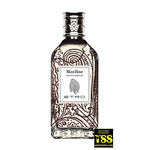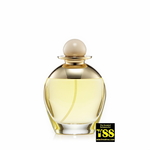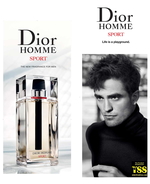Fendi l'Acquarossa (2013): Oud 2.0 or the New Strange, Invisible Aesthetic Compass {Perfume Review & Musings}
Smelling L'Acquarossa for the first time in principle, I realize I smelled it on a passer-by, just the other day. I had noticed a bold, fruity perfume which I identified after a while as Deci-Delà by Nina Ricci (1994). This was an unconventional choice, I thought, as the scent must be by now worn by the faithful only. On the other hand, with its raspberry-oud note, it is on-trend. It turns out the new L'Acquarossa by Fendi is reminiscent of that earlier perfume.
The composition co-signed by François Demachy working together with Delphine Lebeau and Benoist Lapouza. It is advertized as a woody floral...
The dominant impression at first is that the perfume is "sophisticated" -- make it even "very sophisticated". As the scent evolves, this intangible sensation deepens. It smells sleek, polished, supple, and feline. Chiara Mastroiannithe spokesperson for the fragrance - the daughter of Belle de Jour Catherine Deneuve and La Dolce Vita Marcello Mastroianni - looks a bit wooden in the picture signed by Jean-Baptiste Mondino - except for her face which is pensive - but the fragrance itself suggests the movements of a supple, elegant body evolving in an environment of ease and privilege. A woman, who is more of a professional than a hostess, traverses a luxurious living room, with a sense of purpose.
The perfumers devoted much of their efforts to carving out this note of sophistication. It is a social impression rather than a sensory perception as when you smell a flower, yet real.
Fendi is part of the LVMH conglomerate which includes the brand of Guerlain. It is not surprising therefore to discover that in the midst of this new juice there is a recognizable rose accord, the one found in Idylle by Guerlain. Past the exuberant opening, it smells of a dusky rose with touches of tobacco (Idylle) made creamier by the addition of magnolia. A note of prune recalls an earlier Fendi like Theorema (1998) making sure Fendi aficionados will tread in familiar terrain.

The main olfactory pitch for the fragrance rests on the red and golden Lantana flowers. Some research yields the facts that the plant belongs to the Verbena family; both their flowers and leaves release aromas; Lantanas are known to gardeners as deer-repellents and as butterfly-attractants. There is an essential oil of Lantana Camara. Its smell can be compared to that of Davana as it contains the molecule Davanone. This facet smells fruity and pruney and is evocative of dark black, thick and sweet Georgian wines. It also contains some Camphor. This is why its odor profile can be described as being somwhere in-between raspberry and mint.
The Lantana confers a subtle herbaceous facet to l'Acquarossa which you feel more subliminally than with galbanum although you can approximate it to it.
Without making use of oud, this composition manages to play on the range of oud thanks to the inclusion of Lantana. The introduction of this new oud note which was so new a few years ago is hitting a further stage of psychological maturation. You are now thrumming the secondary nuances of this new taste for oud, or agarwood. Raspberry becomes thicker and more intense. Pruney is good. Woods are in. Oud has become a significant cultural marker of our olfactory orientations rather than just a note of fashion. You look up to oud and think "what variation could be thought of?" It is like an early 21st century twist in reverse on the fresheness rage of the 1990s. This is why the early Deci-Delà by Nina Ricci with its discreet oud-y impression has crept back in the range of sensations evoked by the sillage of l'Acquarossa as you smelled it the other day in a state of innocence. Oud has become an aesthetic and moral compass for our noses. We are refining our ways away from it, yet make no mistake, it is acting as an olfactory North Pole in a strange, invisible manner.
Notes: Calabrian bergamot, Mandarin from Sicily, prune accord, Lantana, rose essence, orange blossom, magnolia, red cedar wood, musk, Patchouli from Indonesia.











I remember that perfume, but had forgotten it until you wrote about it. I had a vivid memory of what it smelled like as soon as I realized what I was reading. Thank you!
I take it you mean Deci Delà? I used to like it for its whimsical, mischievous spirit. It's a fun but not shallow scent.
I can't agree with all your delights on this fragrance. Yes, it's more distinctive, more unique than most of recent release, but still it disappoints a lot in the base. It starts really sophisticated with old-fashioned bergamot, but soon L'Acquarossa becomes fruitier with a rose inclusion. In the base all the sophistication vanishes leaving me with ordinary and quite cheap smelling sour fruity dry down reminding of Marc Jacobs Lola and Kenzo Madly eau de toilette.
Hi,
I didn't mean to make it sound like I am delighted by the fragrance. I agree that it has a noticeable signature and I also agree that the drydown can present issues of lastingness. I was more interested in pinpointing how to me the composition is influenced by the tonalities of oud rather than oud itself. This to me is interesting because it truly underlines how oud is about a cultural/olfactory shift in contemporary perfumery influencing our sensibilities rather than being a mere note in fashion.